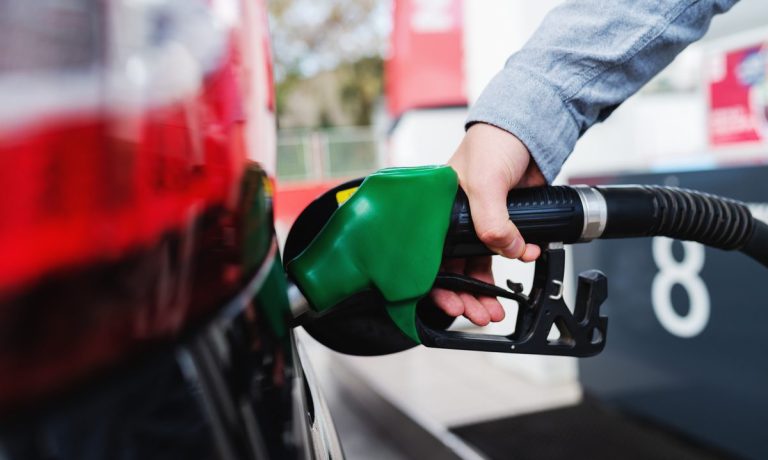Further Fuel Price Hikes Could Stall Travel Sector’s Recovery

Seems strange to say somehow, but we all need a vacation in 2022. How we approach that will depending on factors ranging from gas prices to a slow recovery in air travel and lodgings.
With inflation generally — and gas price hikes specifically — dampening some confidence in the travel sector for what all hope is a meaningful return of travelers with the warm weather, lower-cost alternatives to major destinations and modes of travel are back in the spotlight.
As for consumer views on gas prices, AAA released survey results on Mar. 10 finding that “with the national average at an all-time high of over $4, Americans may have reached a tipping point. Over half (59%) said they would make changes to their driving habits or lifestyle if the cost of gas rose to $4 per gallon. If gas were to reach $5.00, which it has in the Western part of the country, three-quarters said they would need to adjust their lifestyle to offset the spike.”
There was good news too, with the group noting that higher gas prices “likely won’t have as much of an impact on summer travel. AAA’s survey found that 52% of Americans have plans to take a vacation this summer. Of those, 42% said they would not consider changing their travel plans regardless of the price of gas.”
RVs, Home Sharing Outlook Is Comfy
Speaking with PYMNTS on Monday (Mar. 14), Outdoorsy CEO Jeff Cavins said AAA’s findings on sentiment are reflected by increasingly strong demand for recreational vehicles (RVs) in 2022.
“We are seeing robust booking activity on our platform, more than the previous two years,” Cavins told PYMNTS. “As the world opens up, this form of travel is more mainstream than ever before. We will see growth of about 125% over last year in the form of bookings.”
See also: New RV Lending Model Offers Big Drop in Borrowing Costs for Owners Who Rent Them Out
He added “The RV industry continues to ship at record levels. In the last month, I believe that more than 600,000 units where shipped, with the majority being in the towable segment. RV backlog continues at record levels. This means more travel away from urban centers as costs for urban vacations are skyrocketing.”
While Airbnb CEO Adam Chesky spends 2022 working from various rentals on that platform to put the new work-live-play mobility dynamic on full public relations display in a similar vote of confidence for getaway alternatives, traditional hotels and airlines are optimistic, but uncertain.
See also: Airbnb CEO Plans to Work Remotely From Company Listings
Hotel, Airline Sectors Need More Runway
In a report on the industry released in January, the American Hotel & Lodgings Association (AHLA) said that it expected hotel demand to return to near pre-pandemic levels this year, with room revenues projected to reach $168 billion — a percent shy of 2019 levels and 19% higher than in 2021.
In a Mar. 11 letter published on its website after the Senate and House passed a $1.5 trillion government funding package, AHLA President and CEO Chip Rogers said, “While we are disappointed this package does not include the targeted COVID-19 relief hotel employees and small businesses have needed since the early stages of the pandemic, the bill contains a number of victories for hoteliers.”
He pointed to the “$250 million for Brand USA — a vital public-private partnership dedicated to increasing international tourism to America, driving the nation’s economy and our industry.”
See also: Visa’s Cybersource Joins IATA to Streamline Airline Payments
On Mar. 1, International Air Transport Association (IATA) Director General Willie Walsh said in a press release that “The trajectory for the recovery in passenger numbers from COVID-19 was not changed by the Omicron variant. People want to travel. And when travel restrictions are lifted, they return to the skies. There is still a long way to go to reach a normal state of affairs, but the forecast for the evolution in passenger numbers gives good reason to be optimistic.”
According to IATA’s latest figures, “in 2021 domestic traveler numbers were 61% of 2019 levels. This is expected to improve to 93% in 2022, 103% in 2023, 111% in 2024 and 118% in 2025.”
As consumers do the math on what vacations suit budgets, close to home may win in 2022.
“The cost of an RV vacation for a family of four can be 64% of the cost of a similar vacation using hotels and airlines in mass market cities, which requires eating out at restaurants, travel via Uber, LYFT and taxi, etc,” Outdoorsy’s Cavin told PYMNTS. “The gap is widening as the inflation impact is really affecting urban travel much more than the alternative on Outdoorsy.”
See also: Travel and Hospitality BNPL Options Expand as Sector Faces New Enemy — Inflation